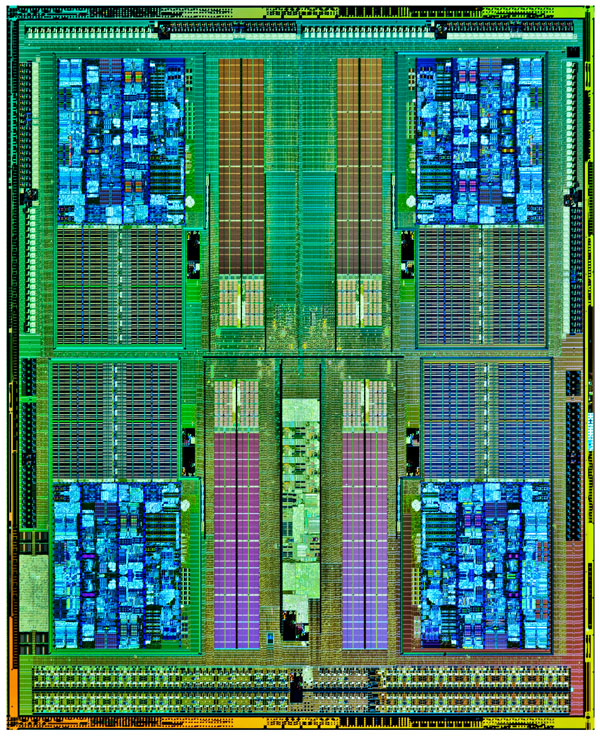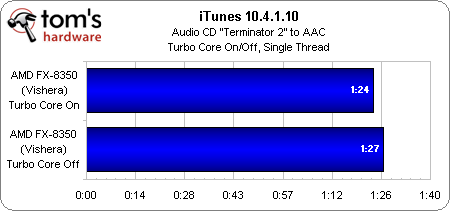AMD FX-8350 Review: Does Piledriver Fix Bulldozer's Flaws?
Last year, AMD launched its Bulldozer architecture to disappointed enthusiasts who were hoping to see the company rise to its former glory. Today, we get an FX processor based on the Piledriver update. Does it give power users something to celebrate?
Meet AMD’s Piledriver-Based FX Line-Up
Ed.: Originally, this story contained a page exploring resonant clock mesh technology, from Cyclos Semiconductor, which was expected to surface in AMD's Piledriver-based SoCs. Upon discussing this in greater depth with the company, however, "the timing of the products and the implementation of resonant clock mesh caused [the technology] to not be productized with "Piledriver" based processors." As such, we've removed that page to avoid any confusion.
As someone who reviews computer hardware, the challenges facing a business matter a lot less to me than the products it sells. We can all agree that the last year was pretty awful for AMD’s processor team, beginning with the power-hungry Bulldozer-based FX CPUs that slowly slid down in price over 12 months in response to a more compelling family of third-gen Core processors from Intel. But every delivery to my SoCal lab represents an opportunity. Chatter about mismanagement, layoffs, and a troubled past matter little in the evaluation of a new CPU. So, let's get down to business.
Sometimes it’s possible to predict the outcome of a story. Had AMD shipped an FX-8170 running 200 MHz faster than its former flagship, I would have guessed that it’d exhibit the same issues with lightly-threaded workloads, it would probably outperform a Core i5-2500K in more intensive tasks, but its power consumption would probably look pretty nasty compared to modern 77 W Ivy Bridge-based chips.
Instead, we have an FX-8350, which centers on the same Piledriver architecture as the Trinity-based APUs introduced less than one month ago. Experience tells us that, per core and per cycle, Piledriver can be as much as 15% faster than a Bulldozer-based design. Add to that the fact that FX-8350 operates at least 400 MHz faster than FX-8150. Oh, yeah. And Ivy Bridge only gave Intel’s line-up single-digit gains. There’s every chance that today’s performance comparison is going to be a lot more interesting than the overwhelmingly negative judgment passed on FX-8150 one year ago.
Meet The Piledriver-Based FX Family
In a faithful return to its Bulldozer approach, AMD sent out the fastest model in its new line-up for review, but is actually introducing eight-, six-, and four-core configurations. Of course, we know they all center on the Piledriver architecture, but the SoC itself is referred to as Vishera, and it’s still branded as FX.
A complete Vishera processor measures 315 square millimeters and is composed of 1.2 billion transistors. Those are the exact same figures given for Zambezi, the previous-generation SoC based on AMD’s Bulldozer architecture. Whatever alterations the architects made—from ISA extensions to a larger L1 DTLB—surface area and transistor count don’t change enough to move the dial on those contextually-irrelevant but interesting-to-know-anyway specifications.
Get Tom's Hardware's best news and in-depth reviews, straight to your inbox.
| AMD's 2012 FX Family | |||||||
|---|---|---|---|---|---|---|---|
| Row 0 - Cell 0 | Core Count | Base Clock | Max. Turbo | NB Clock | TDP | Price | OPN |
| FX-8350 | 8C / 8T | 4.0 GHz | 4.2 GHz | 2200 MHz | 125 W | $195 | FD8350FRW8KHK |
| FX-8320 | 8C / 8T | 3.5 GHz | 4.0 GHz | 2200 MHz | 125 W | $169 | FD8320FRW8KHK |
| FX-6300 | 6C / 6T | 3.5 GHz | 4.1 GHz | 2000 MHz | 95 W | $132 | FD6300WMW6KHK |
| FX-4300 | 4C / 4T | 3.8 GHz | 4.0 GHz | 2000 MHz | 95 W | $122 | FD4300WMW4MHK |
Two of the four SKUs boast eight integer cores, or four Piledriver modules, however you choose to label AMD’s compute units. The flagship, FX-8350, features a base clock rate of 4 GHz. Turbo Core technology is able to push that to 4.2 GHz in lightly-threaded workloads, though most of the chip’s speed-up undoubtedly comes from its default state. How much does Turbo Core really do for FX-8350? Not much. In iTunes, our single-threaded benchmark finishes three seconds faster with the feature on.
An FX-8320 drops the base clock rate to 3.5 GHz, though Turbo Core pushes that to 4 GHz under defined thermal limits (a 500 MHz speed-up is likely more meaningful to FX-8320). Both eight-core models include 8 MB of L2 cache (split into one shared 2 MB slice per module) and 8 MB of L3 cache (shared between all four of the SoC’s modules). AMD is suggesting a $195 price tag on FX-8350 and a $169 price on FX-8320.
FX-6300 comes equipped with three active modules (six cores) and drops pricing all the way to $132. A 3.5 GHz base clock rate helps take advantage of the architecture’s strengths in threaded apps, while a 4.1 GHz peak Turbo Core setting tries to compensate for lackluster single-threaded speed. Like the four-module parts, FX-6300 exposes 2 MB of shared L2 per module (totaling 6 MB in this case) and a shared 8 MB L3 cache. Fewer active resources (along with a slightly slower 2 GHz northbridge clock) allow FX-6300 to fit within a 95 W thermal ceiling, down from the 125 W limit imposed by both FX-83x0 processors.
A lone dual-module CPU, FX-4300, is also rated for 95 W. Its base 3.8 GHz clock rate is sped up to 4 GHz in lightly-threaded apps, and a 2 GHz northbridge frequency matches the FX-6300. A drop to 4 MB of shared L3, however, and a price tag just $10 under the triple-module chip will likely encourage most folks to spend the extra $10 bucks.
Although AMD’s architecture doesn’t seem particularly bandwidth-starved, Vishera’s dual-channel DDR3 memory controller officially supports 1866 MT/s data rates. Frankly, we’d rather use lower-latency 1600 MT/s modules to maximize value, particularly since our results show that you don't gain any performance (outside of Sandra 2013 Beta) after spending more on faster memory.
The entire FX line-up also features an unlocked ratio multiplier, which serves to simplify overclocking. Is Vishera scalable enough to make tuning worthwhile? What do you think about 5.125 GHz using a closed-loop liquid cooler?
Current page: Meet AMD’s Piledriver-Based FX Line-Up
Next Page Overclocking And Platform Compatibility-
amuffin Looks like AMD did pretty well with the 8350.Reply
I now really don't see people purchasing it though....people will be buying the 8320. -
kracker Interesting, nice improvement over BD, it spars very closely or beats the i5-3570K sometimes, It really can't compete with intel's high end, but nevertheless good job AMD!Reply -
sixdegree AMD is doing good with the pricing this time. This is what AMD should be: aggressively priced CPU with added features.Reply -
esrever The price is actually nice this time. Hopefully AMD sticks around and gives good deals like this for years to come.Reply -
Nice job AMD. It just kept itself afloat! Not performance killer, but good enough to get a chunk of desktop sales just in time for the holiday season. Probably wouldn't buy it over an Intel system because most apps are still quite single threaded, but I would certainly consider it. Welcome back to the race AMD. Keep up the good work!Reply
-
najirion so... amd will still keep my local electric provider happy. Good job AMD but I think FM2 APUs are more promising. The fact that APUs alone can win against intel processors if discrete graphics is not involved. Perhaps AMD should focus in their APU line like integrating better gpus in those apus that will allow dual 7xxx graphics and not just dual 6xxx hybrid graphics. The entire FX architecture seems to have the issue with its high power consumption and poor single-thread performance. Better move on AMD...Reply -
dscudella I would have liked to see more Intel offerings in the Benchmarks. Say an i3-2120 & i3-3220 for comparisons sake as they'll be cheaper than the new Piledrivers.Reply
If more games / daily use apps start using more cores these new AMD's could really take off. -
EzioAs Interesting. Probably not a gamers first choice but for users who regularly use multi-threaded programs, the 8350 should be very compelling. About $30 cheaper than a 3570K and can be overclock as well, video/photo editors should really consider this. It doesn't beat current Intel CPUs in power efficiency but at least it's significantly more efficient than Bulldozer.Reply
Thanks for the review.
Btw Chris, how many cups of joe did you had to take for the overclocking testing? ;) -
sorry just not overly impressed.Reply
5-12% performance increase 12% less power - sound familiar?
the only difference this time was less hype before the release. (lesson well learned AMD!)
-
gorz I think the fx-4300 is going to be the new recommended budget gaming processor. Good price that is only going to get lower, and it has overclocking.Reply



